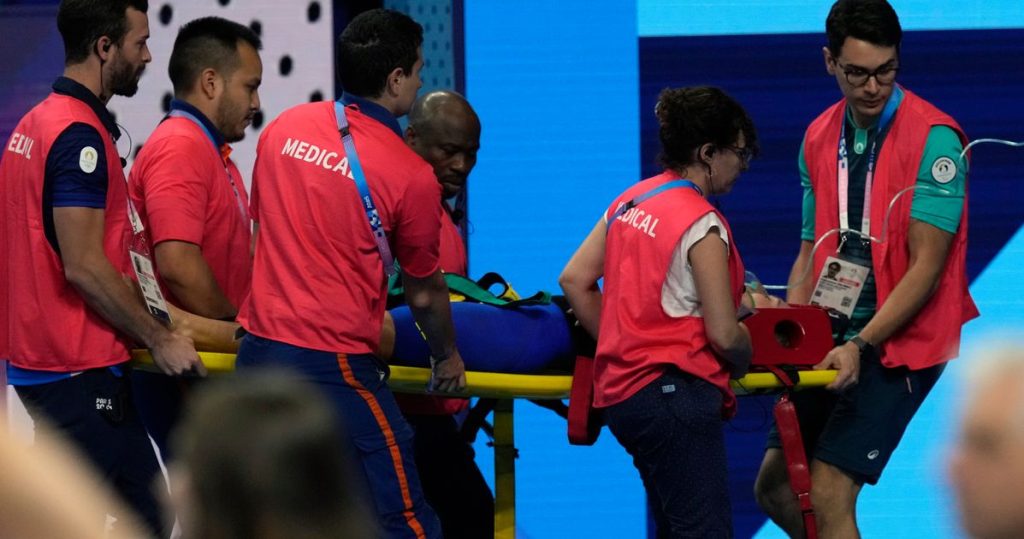Slovakia swimmer Tamara Potocka collapsed poolside after a qualifying heat of the women’s 200-meter individual medley at the Paris Olympics and received immediate medical attention. Potocka, 21, was seen wearing an oxygen mask as she was taken away on a stretcher, but medical personnel confirmed she was conscious. She collapsed after getting out of the water and was surrounded by medical attendants who quickly placed her on a stretcher and carried her off the pool deck. It is unclear if she received CPR. Unfortunately, Potocka’s time of 2 minutes, 14.20 seconds was not fast enough to advance her to the semifinals, thus eliminating her from the competition.
The incident at the Paris Olympics involving Tamara Potocka highlights the physical demands and potential risks faced by athletes during competition. While Potocka was able to finish her race before collapsing, the quick response of medical personnel and the attention to her well-being demonstrate the importance of safety measures in sports competitions. Despite being eliminated from the event due to her time, Potocka’s health and recovery take precedence in such situations. The incident serves as a sobering reminder of the physical strain that athletes endure in pursuit of their goals.
The news of Potocka’s collapse sparked concern among spectators and fellow competitors, underscoring the inherent risks associated with high-level athletic competition. The sight of a young athlete in distress highlights the vulnerability and challenges faced by individuals who push themselves to their physical limits. The importance of having medical personnel on standby during sporting events cannot be overstated, as their prompt intervention can make a crucial difference in ensuring the well-being of athletes. The incident with Potocka serves as a reminder of the sacrifices and risks that athletes take in pursuit of their dreams.
The aftermath of Potocka’s collapse raises questions about the physical and mental toll that competitive sports can take on athletes. While the desire to succeed and achieve one’s goals is a powerful motivator, it is essential to strike a balance between pushing oneself to the limit and ensuring one’s safety and well-being. The incident serves as a cautionary tale for athletes and coaches alike, emphasizing the need for proper training, preparation, and awareness of the potential risks involved in high-intensity sports. Potocka’s experience serves as a stark reminder of the importance of prioritizing health and safety above all else.
The incident involving Tamara Potocka at the Paris Olympics underscores the unpredictable nature of competitive sports and the importance of being prepared for any eventuality. While athletes strive to perform at their best and achieve their goals, unforeseen circumstances can arise that require immediate attention and intervention. Potocka’s collapse serves as a wake-up call for athletes, coaches, and organizers to be vigilant and proactive in ensuring the safety and well-being of participants. By learning from such incidents and taking appropriate precautions, the sporting community can work together to create a safer and more supportive environment for all involved.
In conclusion, the incident at the Paris Olympics involving Tamara Potocka serves as a stark reminder of the physical risks and challenges faced by athletes in high-level competition. While the pursuit of excellence and achievement is a driving force for many athletes, it is essential to prioritize health and safety above all else. The swift response of medical personnel and the attention to Potocka’s well-being highlight the importance of preparedness and vigilance in sports competitions. By recognizing the potential risks and taking steps to mitigate them, athletes can continue to pursue their goals while ensuring their long-term health and well-being are protected.


